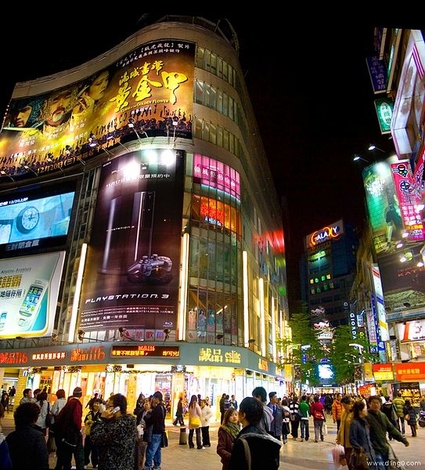The name of Ximending was derived from its position outside the west gate of Taipei City. In the beginning during Japanese rule, Ximending was an area of wilderness, through which there was a road connecting the west gate of Taipei to the town of Bangka. Later, the Japanese decided to follow the example of Asakusa in Tokyo to set up an entertainment and business area. The earliest entertainment facilities constructed included the Taihokuza in 1897, Eiza (now called New Wanguo Market) in 1902, and the Red House Theater in 1908.
Ximending became a well-known theater street in Taipei in the 1930s and grew even more prosperous after the defeat of Japan. In the 1950s, every theater was full to capacity and scalpers ran wild. Gradually, more theaters opened one after another; At one point, Wuchang St Section 1 had over ten theaters. However, in the 1990s, as Taipei City developed toward the Eastern District and away from Ximending, it began to lose business. In 1999, the city government and local stores established Ximending as a pedestrian area, prohibiting the entrance of vehicles on weekends and national holidays, a move that attracted young consumers and brought back business. Today, Ximending has over twenty theaters and six thousand vendors, and is a popular area for small concerts, album launches, and street performances.
Ximending attracts an average of over 3 million shoppers per month. It has been called the "Harajuku" of Taipei. The local bookstores sell Japanese magazines, books, CD albums, and clothing, making it a haven for the "Harizu", or Japanese culture adorers. Individual vendors gather in the streets as well as the large business buildings, such as Wannien Department Store and Shizilin Square in the early days, and Wanguo Department Store and Eslite 116 in the later period.
Due to the density of young people, Ximending is comparable to Shilin Market and the Eastern District to be areas with the highest crime rates. In addition, Ximending is well-known for student prostitution.
